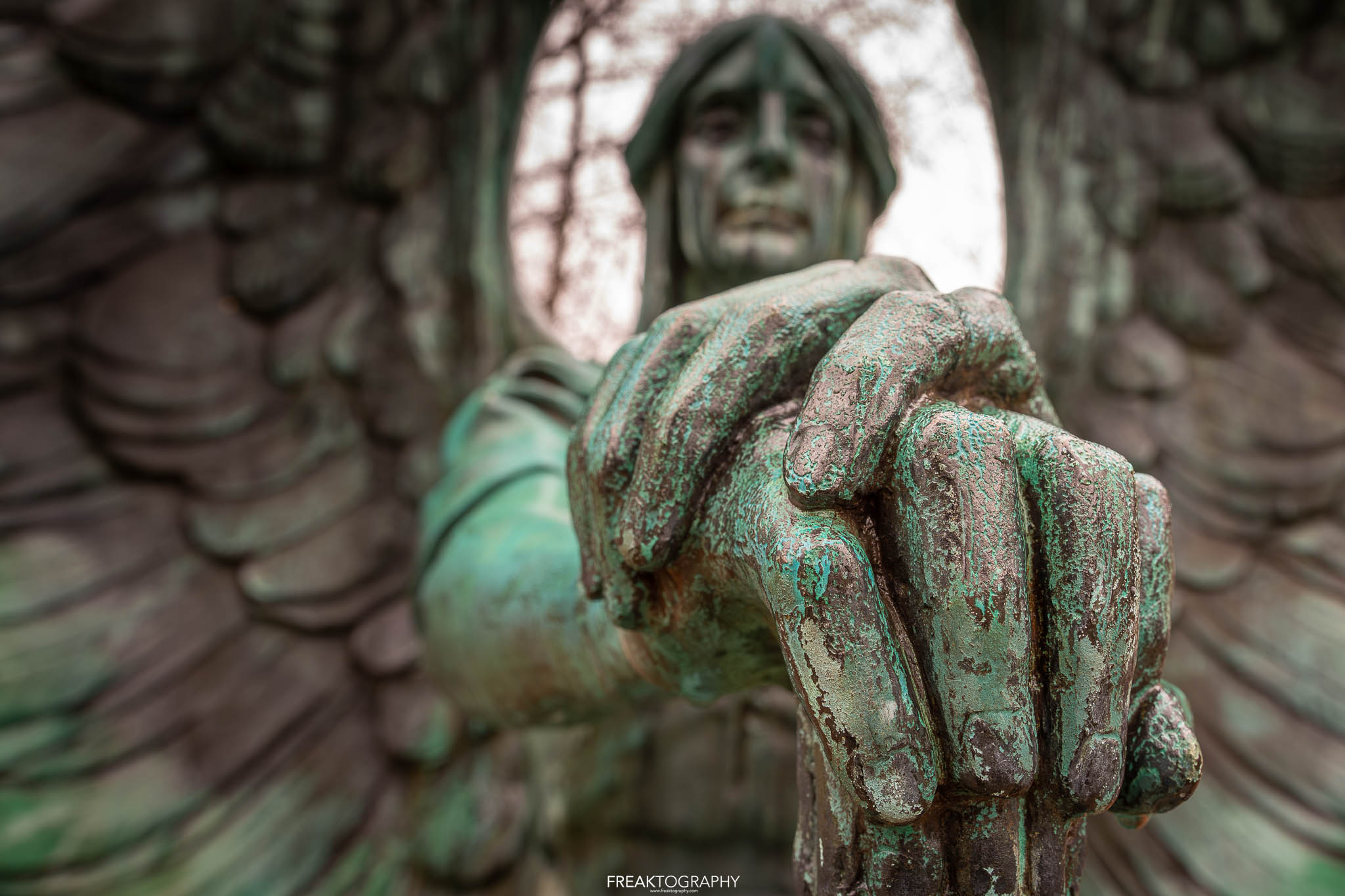Share this Page
The Haserot Angel, also known as the “Angel of Death Victorious,” is a famous sculpture located in Lake View Cemetery in Cleveland, Ohio, USA. It was created by the Italian sculptor Herman Matzen in 1924 and is part of the Haserot family’s grave site.
The sculpture depicts a beautiful angel with outstretched wings, holding a large palm leaf in one hand and a extinguished torch in the other. The angel’s face is unique in that it appears to be weeping black tears. This unusual feature has led to various interpretations and legends surrounding the sculpture.
The most common interpretation is that the black tears symbolize the angel’s sorrow for the deceased and the end of life. Some also suggest that the tears represent the angel extinguishing the torch of life, signifying the end of a person’s journey. The palm leaf in her hand is often seen as a symbol of victory over death or a symbol of peace.
The Haserot Angel has become an iconic and somewhat eerie monument in Lake View Cemetery and has attracted many visitors and photographers over the years. It is considered one of the most unique and hauntingly beautiful sculptures in any cemetery.
The Haserot family is a prominent family in Cleveland, Ohio, known for their contributions to the community and their connection to the Haserot Angel sculpture. While specific details about the family may not be widely known, they are primarily recognized for commissioning the famous Haserot Angel monument located in Lake View Cemetery in Cleveland.
The Haserot Angel, also known as the “Angel of Death Victorious,” was commissioned by the Haserot family as a grave marker for their family plot. The sculpture, created by Italian sculptor Herman Matzen in 1924, has become a notable and iconic landmark in the cemetery and is visited by many people interested in its unique and symbolic design.
Aside from their association with the sculpture, specific information about the Haserot family’s history and contributions may not be as readily available or widely documented, as they are primarily recognized in connection with the memorial sculpture.
